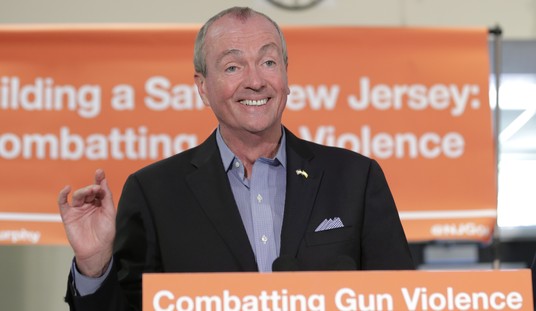It’s a comedown in one sense, and perhaps a pickup in another context. The US economy expanded at a decent clip of 2.3% in the first quarter, albeit less robustly than the previous quarter’s final revised annualized growth rate of 2.9%. It does, however, reflect the best Q1 growth rate in three years as the Bureau of Economic Analysis has struggled to account for chronic low figures in the winter quarter:
Real gross domestic product (GDP) increased at an annual rate of 2.3 percent in the first quarter of 2018 (table 1), according to the “advance” estimate released by the Bureau of Economic Analysis. In the fourth quarter, real GDP increased 2.9 percent.
The Bureau emphasized that the first-quarter advance estimate released today is based on source data that are incomplete or subject to further revision by the source agency (see “Source Data for the Advance Estimate” on page 2). The “second” estimate for the first quarter, based on more complete data, will be released on May 30, 2018.
The biggest driver of the drop is what has been fueling growth for years — personal consumption expenditures (PCE), or more colloquially, consumer spending. For some reason that fell to its lowest level in the past several years to 1.1%. Growth rates in the sale of overall goods and durable goods in particular both went negative for the first time in years (-1.1% and -3.3% respectively), although durable goods went slightly negative in 2017Q1’s report too. Service-related consumer spending expanded somewhat at 2.1%, but if those numbers hold up in the revisions, someone will have to figure out what has consumers spooked — especially after the big tax cuts put more money in their pockets.
Other indicators gave a mixed view of the economy. Government spending slowed significantly too, dropping from 3% in 2017Q4 to 1.2% in this report, but business investment increased significantly, going from 4.7% growth in the previous quarter to 7.3% growth in this report. Businesses appear optimistic about future growth opportunities, and that may reflect the corporate-tax reforms passed in December’s bill. However, the difference between consumer and business behavior suggests that the bill’s economic benefits may take longer to get down to consumers than Republicans can wait in this midterm cycle.
Is this a fluke? It’s the advance report, and there will be two more revisions before these numbers get finalized. It’s also Q1, which has been routinely problematic in terms of metrics. However, one key indicator suggests that it may not improve much. Real final sales of domestic product only rose 1.9%, indicating that some of the growth in the topline number might be due to inventory expansion to meet demand that doesn’t appear to be materializing.
Still, as CNBC notes, the BEA report still beat market expectations:
The U.S. economy slowed in the first quarter as consumer spending grew at its weakest pace in nearly five years, but the setback is likely temporary against the backdrop of a tightening labor market and large fiscal stimulus.
Gross domestic product increased at a 2.3 percent annual rate, the Commerce Department said in its snapshot of first-quarter GDP on Friday, also held back by a moderation in business spending on equipment and investment in home building.
The economy grew at a 2.9 percent pace in the fourth quarter. Economists polled by Reuters had forecast output rising at a 2.0 percent rate in the January-March period.
The first-quarter growth pace is, however, probably not a true reflection of the economy, despite the weakness in consumer spending. First-quarter GDP tends to be sluggish because of a seasonal quirk. The labor market is near full employment and both business and consumer confidence are strong.
The AP’s Martin Crutsinger takes a glass-half-full approach too:
Still, the January-March increase came in better than expected and was enough to propel growth over the past year to come close to the 3 percent goal set by the Trump administration. …
Consumer spending, which accounts for 70 percent of economic activity, decelerated sharply from a 4 percent growth rate in the fourth quarter to a 1.1 percent pace in the first quarter. That was offset somewhat by gains in inventory building by businesses and a lower trade deficit.
Analysts viewed the first quarter slowdown as temporary, with consumers expected to boost their spending amid a low unemployment rate and the initial impact of the $1.5 trillion in tax cuts that Congress approved in December.
It’s not a bad report, and this quarter has chronic issues with metrics. However, Republicans had better hope that consumer spending and confidence picks up in Q2. Even for a Q1, those numbers look awful.








Join the conversation as a VIP Member